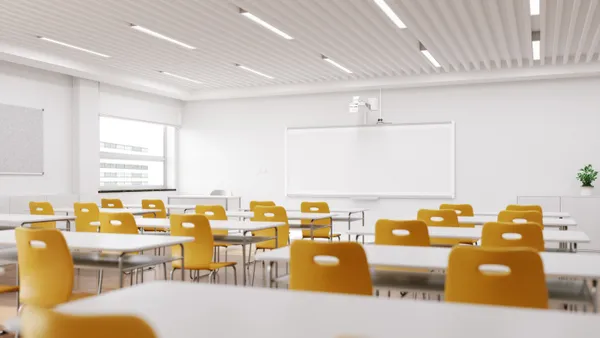Dive Brief:
- According to a recent analysis of federal data compiled by the Institute for Higher Education Policy, state spending rose by an average of 5% for higher education and 89% on corrections between 1989-2013.
- A new "College Not Prison" campaign from the institute calls for expanded access to college programming for students formerly or currently involved in the justice system through Pell grant access and incentives for students who remain engaged with learning and career development programs post-release.
- The disparity in state funding priorities suggest there is much work to be done in promoting student access and working with K-12 districts to help dismantle the school-to-prison pipeline.
Dive Insight:
Many have suggested there has been a measure of success in promoting college access, saying the new fight is in inclusion. Promoting college access was a major initiative during the latter stages of the Obama Administration’s higher education platform, but has not been a detailed part of the Trump administration’s approach to reform. However, the funding trends presented by the IHEP analysis indicate there is still much work to be done on promoting access for at-risk youth across the country.
It is no secret that involvement with the criminal justice system, whether it is the student himself or a family member, is disruptive to learning. Strict zero-tolerance programs which punish students for small infractions as early as preschool, coupled with a persistent unwillingness of states to invest in higher education has created the school-to-prison pipeline, but colleges and universities have an opportunity, and some say a responsibility, to work together with K-12 schools in their communities to help promote college access.
Programs like one in Philadelphia to exchange jail time for classroom time could be one solution to help reverse the trend, as could initiatives like the pilot to expand Pell access to prisoners announced last summer, as long as Pell grants funding remains stable in future federal budgets.










 Dive Awards
Dive Awards



